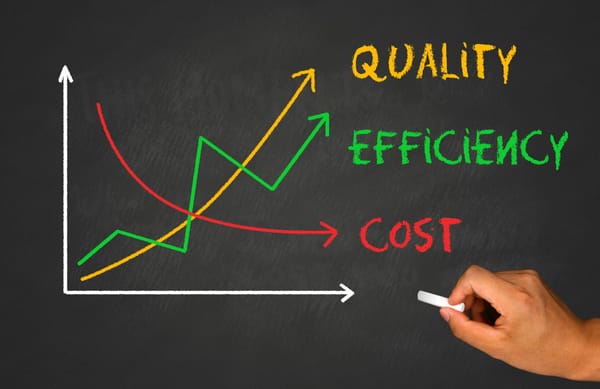Introduction
Building a new home is filled with excitement, decisions, and, let's face it, a bit of complexity.
Among the various elements you'll encounter, the Construction Phase Plan (CPP) stands out by addressing construction health and safety issues and how to manage them for each specific project.
But what exactly is a CPP, and why does it hold such importance in construction?
In essence, a CPP is a comprehensive strategic plan that outlines critical safety and health management procedures during the construction phase of a project. Think of it as a master blueprint for safety, outlining an amount of detail & critical information for a particular project. The CPP is designed to protect everyone from the project manager and construction workers to the home owners themselves.
The purpose of a CPP goes beyond just compliance with regulatory requirements, such as the Construction (Design and Management) Regulations (CDM). It serves as a strategic tool/safety plan for identifying and mitigating safety risks through risk assessments, ensuring that safety measures are not just reactive but proactive. By systematically assessing potential hazards, whether it's dealing with hazardous materials or managing site conditions, a CPP guides the project team in implementing specific measures to maintain a high level of safety and health standards throughout the construction process.
Who benefits from a CPP? Everyone involved.
For construction managers and the planning team, it provides a clear framework for safety arrangements and emergency procedures, enabling a smoother construction process. For workers on-site, it ensures a safer working environment, detailing possible risks minimising the risk of accidents to ensure a safe working environment. And for you, the home owner-to-be, it brings peace of mind, knowing that your dream home is being built with the utmost attention to safety and quality.
As we navigate through this guide, we'll unpack the intricacies of a CPP, from its components and creation to its administration and the significant impact it has on the success of a construction project. Welcome to the world of safer, more efficient home building – let's get started.
Understanding a Construction Phase Plan (CPP)
At its core, a Construction Phase Plan (CPP) is not just a document but a roadmap designed to navigate the myriad of safety and health challenges inherent in the construction process. Whether it's a quaint cottage or a sprawling mansion, every construction project shares a common need for structured planning to ensure safety and compliance. Here's a breakdown of the CPP's essentials.
When is a CPP Required?
A CPP is a legal requirement for every construction project, big or small. However, its complexity and detail are often scaled according to the size and risk profile of the project. For larger projects, particularly those covered under the Construction (Design and Management) Regulations (CDM), a more detailed plan is a statutory duty. These regulations are designed to ensure that safety is considered from the very start of the project, right through to its completion and beyond.
What is Included in a CPP?
A CPP encompasses a wide array of elements, each aimed at addressing specific aspects of construction safety and health management. Key components include:
- Safety Risks and Control Measures: Identification of potential safety hazards and the strategies to mitigate them.
- Method Statements: Detailed descriptions of how tasks will be carried out safely.
- Site Rules and Safety Procedures: Guidelines to ensure everyone on-site knows how to work safely and what to do in case of an emergency.
- Health Risks Assessments: Analyses to mitigate health hazards, from dealing with hazardous substances to managing stress and fatigue.
- Pre-Construction Information: Data collected in the pre-construction phase that informs the CPP, including site conditions and existing structures.
Who Creates and Administers a CPP?
The Principal Contractor usually bears the responsibility for developing the CPP, drawing on Pre-Construction Information provided by the Principal Designer. The construction manager, project manager, and the entire project team play pivotal roles in contributing information and adhering to the plan. It's a collaborative effort, ensuring that safety and health are not just check boxes but integral parts of the construction culture.
Why Use a Construction Phase Plan?
Implementing a CPP isn't just about ticking off a legal requirement; it's about fundamentally enhancing the construction process. Safety management, regulatory compliance, and efficiency are at the heart of why a CPP is indispensable:
- Enhanced Safety: A CPP helps identify and mitigate risks before they become accidents, creating a safer environment for everyone involved.
- Regulatory Compliance: Adhering to CDM regulations and other safety standards is not optional. A CPP ensures that projects meet these critical requirements.
- Project Efficiency: By planning for safety and health, projects can avoid delays and cost overruns associated with accidents and regulatory issues.
Challenges of Implementing a CPP
While the benefits are clear, integrating a CPP into a construction project isn't without its hurdles. Resistance to new procedures, the complexity of accurate risk assessment, and the dynamic nature of construction sites can pose significant challenges. Moreover, ensuring that the CPP remains a "live document" that adapts to new risks and site conditions requires diligence and commitment.
Best Practices for CPP Implementation
To overcome these challenges, several best practices can be followed:
- Early Engagement: Involving the project team, including contractors and subcontractors, early in the planning phase ensures buy-in and compliance.
- Regular Updates: The rapidly changing nature of construction sites means the CPP must be reviewed and updated regularly to remain relevant.
- Leveraging Technology: Digital tools can simplify the administration of CPPs, offering real-time updates and facilitating clear communication among team members.
Digital Management of CPPs
Technology plays a crucial role in modern construction projects, and managing a CPP is no exception. Digital platforms can streamline the creation, distribution, and updating of CPPs. Examples include IAuditor, Xenia, Smartsheet, all offering checklists, daily updates, real time information delivery, free templates ensuring real-time communication. team collaboration, and mobile access for updates on the go.
Understanding Different Terminologies
In different regions or under various regulatory frameworks, CPPs might be known by other names or forms. For example, in Australia the CPP is called the Workplace Health and Safety Site Management Plan also called the CSMP (Construction Site Management Plan). However, the core principle remains the same regardless of your location: planning and managing safety and health throughout the construction phase is essential. Familiarising yourself with local terminologies and requirements is crucial to ensure compliance and effective safety management.
Conclusion
Embarking on the construction of a new home is an adventure filled with anticipation and, admittedly, a fair share of complexity. Central to navigating this complexity safely and effectively is the Construction Phase Plan (CPP). This critical document is more than a mere formality; it's a comprehensive strategy designed to ensure that every stage of the construction process is conducted with the highest safety and health standards. By identifying potential risks and establishing clear procedures and controls, a CPP not only safeguards the well-being of everyone involved in the project but also enhances the efficiency and success of the construction effort. In a field where the unexpected is the norm, a well-crafted CPP stands as an essential tool, ensuring that safety is never left to chance.
FAQs
- What makes a Construction Phase Plan (CPP) essential? A CPP is essential because it ensures that safety and health risks are identified, assessed, and managed throughout the construction phase, helping to protect workers and comply with legal and regulatory requirements.
- Who is responsible for creating a CPP? The principal contractor is typically responsible for developing the CPP, with input from the principal designer and contributions from the entire project team.
- Can a CPP be used for small projects? Yes, a CPP is required for all construction projects, regardless of size, though the level of detail may vary depending on the scale and complexity of the project.
- How often should a CPP be updated? A CPP should be reviewed and updated regularly, especially when new risks emerge or when significant changes occur in the construction process or project scope.
- What are some common challenges in implementing a CPP? Common challenges include resistance to new procedures, the complexity of accurately assessing risks, and the need for the CPP to adapt to the rapidly changing nature of construction sites.
- Are there digital tools available to help manage a CPP? Yes, there are numerous digital tools and project management software options that can help manage a CPP, offering features like real-time updates, clear communication channels, and powerful scheduling capabilities.
- Is a CPP known by any other names? Depending on the region or specific industry standards, a CPP might be referred to by different names, but its core purpose of planning and managing safety and health during the construction phase remains constant.
- What happens if a CPP is not implemented? Failing to implement a CPP can result in safety hazards going unmanaged, potentially leading to accidents and injuries, as well as legal and financial consequences for not complying with regulatory requirements.
- How does a CPP benefit the home owner? While the direct benefits are seen in the safety and efficiency of the construction process, home owners ultimately benefit from the assurance that their new home is built to high safety and quality standards.
- Can the CPP process be simplified? Yes, by leveraging digital tools for planning and communication, engaging all stakeholders early in the process, and ensuring clear, ongoing updates, the CPP process can be made more manageable and effective.
Further Reading
- Transforming construction quality: The power of SWMS and ITPs in Australian Residential Construction - READ HERE
- For Tradesman, the Australian Standards are not optional - READ HERE
- A crash course in Australian Standards for First Time Home Owners - READ HERE
- What are the best men's waterproof construction boots? - READ HERE
- What are the best earbuds for construction workers? - READ HERE







